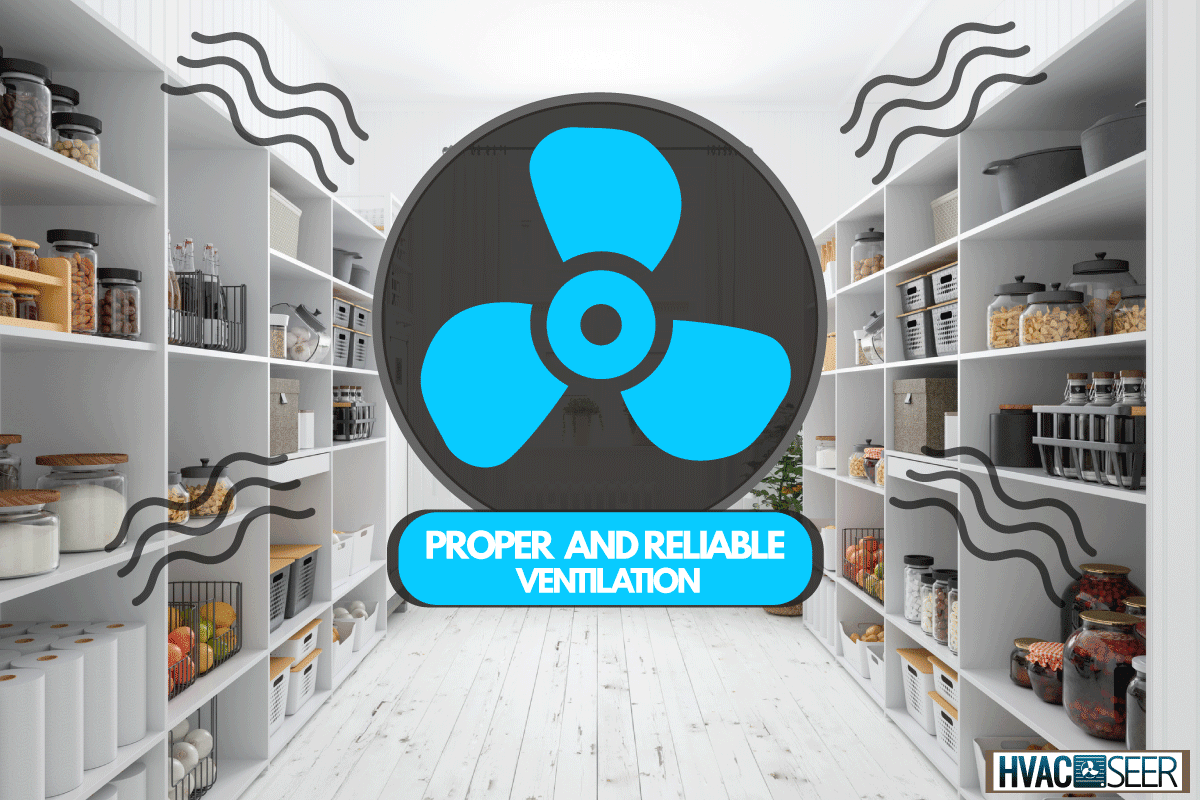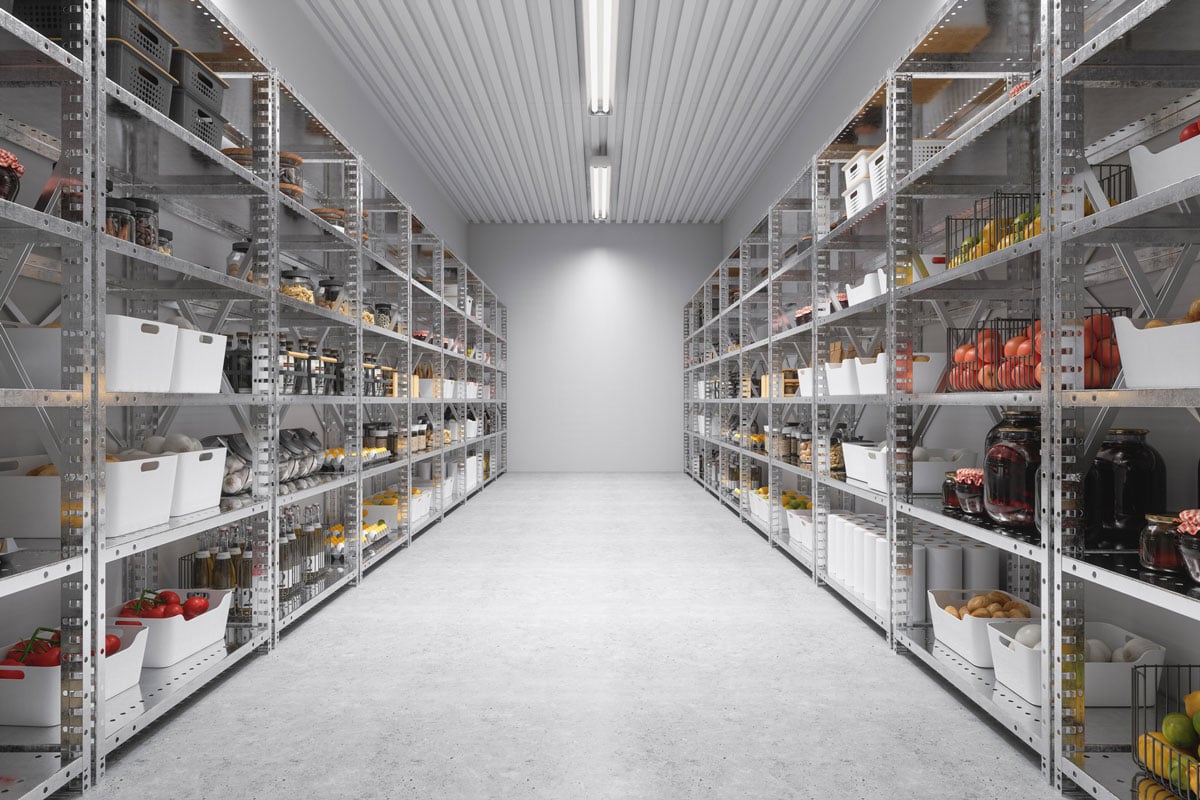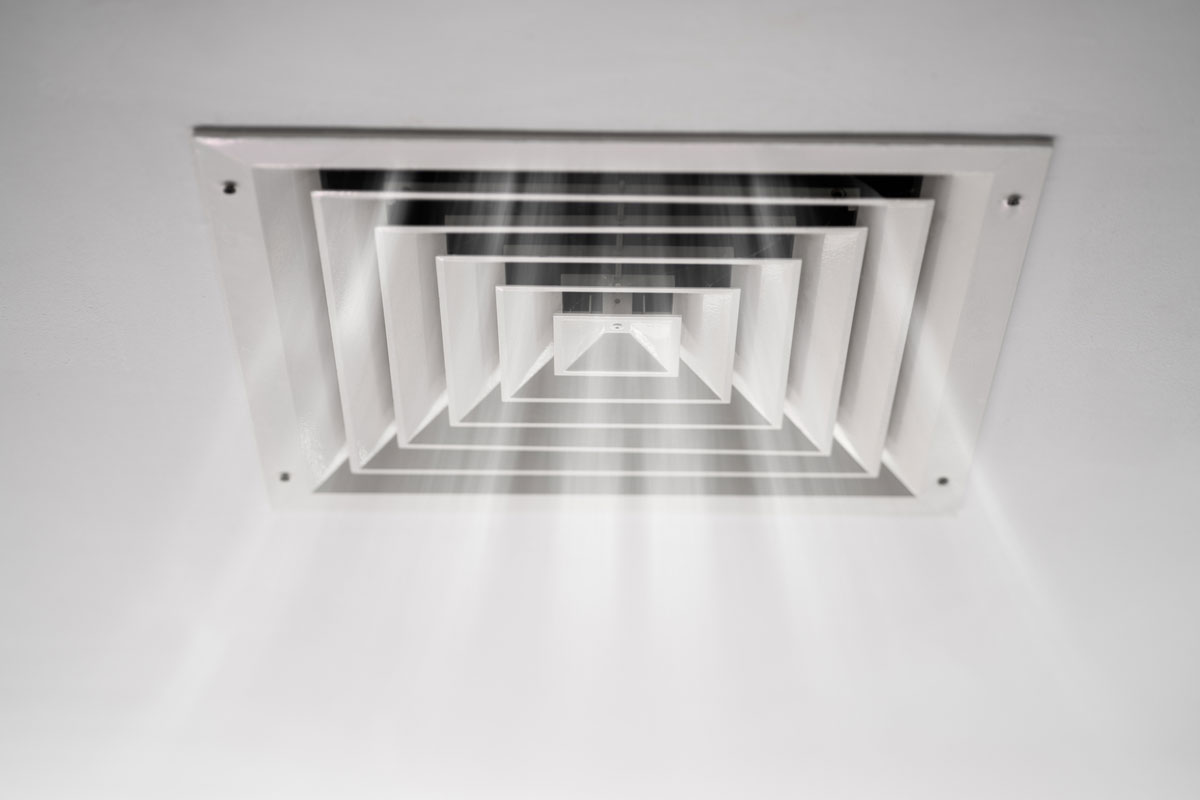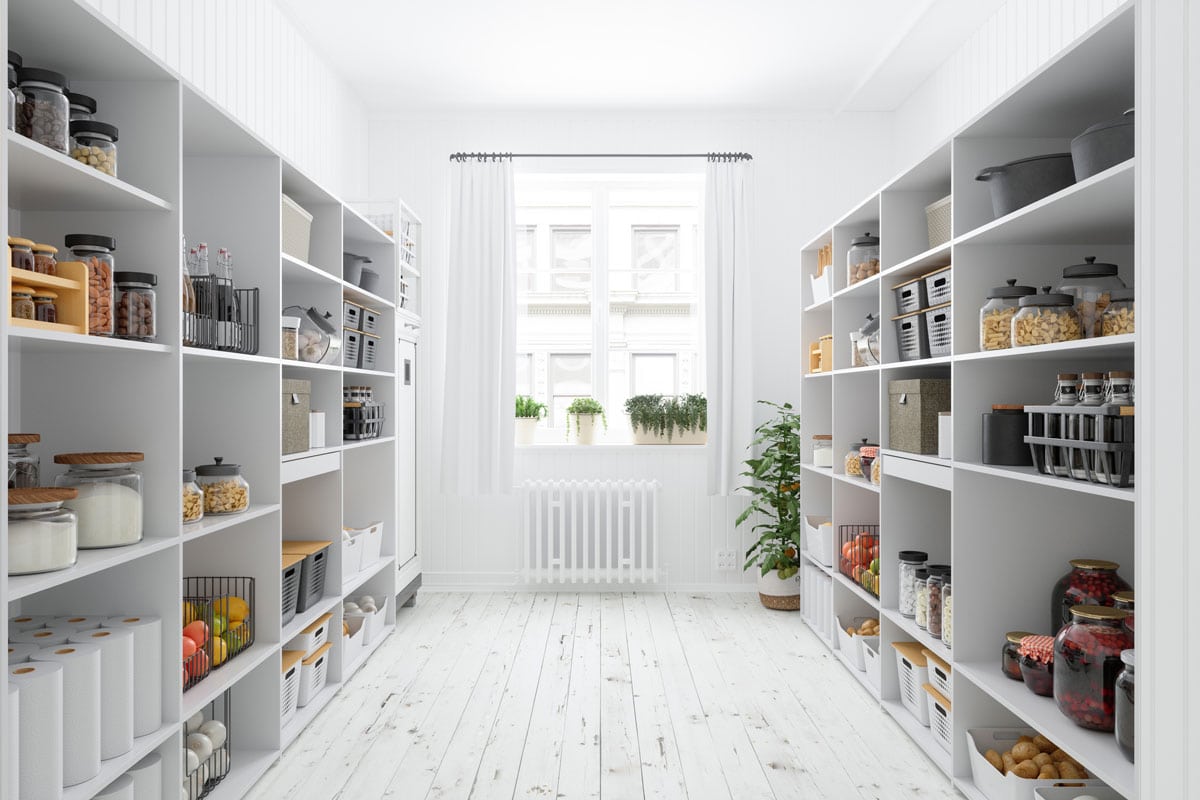You may be looking into removing all the clutter in your home. Your search could lead you to consider building or renting a storage room. But is it necessary for the storage room to have ventilation? We studied the topic, and this is what we discovered.
A storage room needs proper and reliable ventilation to maintain suitable conditions for food and non-food items.
Ventilation helps retain consistent relative humidity, remove odors, and bar stale air and flavors from forming. It also helps to prevent condensation in cold storage rooms.
Ventilation needs differ based on how you use a room. Keep reading as we further discuss ventilating a storage room.
We will also explore the basic requirements of ventilation and look at types of ventilation. So, let's dive right in.

Ventilating A Storage Room
A storage room should be climate-controlled to provide a favorable environment for the stored items. Ventilating the storage room helps climate control it, thus offering the best conditions for storing your goods. These are some benefits you will derive from aerating the storage room.

Control Relative Humidity
Air contains moisture. However, the quantity of humidity in the atmosphere varies depending on the seasons. The air's relative humidity is higher when it is hot than when it is cold since the air holds more moisture when it is hot.
It is best to maintain the indoor relative humidity in the storage room at 30% to 50%. High relative humidity deteriorates the quality of items in storage. As the moisture levels rise, the items become susceptible to rust, corrosion, mold, and mildew.
The stored goods can also become ruined from absorbing the moisture. For example, materials made from paper will decompose faster, while those made from wood will rot or warp.
But very low relative humidity also has adverse effects on stored goods. Ordinarily, items dry out.
The drier conditions can cause shrinkage of books and cloth items, cracking of wood, paint, and brittle paper, or even separating things joined together by an adhesive.
Proper ventilation helps regulate relative humidity in the storage room by ejecting indoor moist air and replacing it with cool outdoor air. The cool air contains less moisture.
Furthermore, the constant air circulation in the storage rooms prevents moisture accumulation, thus barring the negative consequences of high relative humidity.
Suppose you live in an area that generally has high humidity. You can consider combining sufficient ventilation with other methods, such as using a dehumidifier to control moisture levels in the storage room. If the relative humidity is too low, use a humidifier instead.
This dehumidifier has an intelligent temperature and humidity sensor. See it on Amazon.
Prevent Condensation
Cold storage rooms are prone to condensation problems. When warm, moist air from other rooms comes into contact with chilly surfaces, the water vapor it contains cools to its dew point, thus forming droplets.
When your storage room is well-ventilated, the moist air will not touch the cold surfaces and will consequently not form water droplets. In addition, faster air circulation will quickly dry any condensate on surfaces. Therefore, you avoid moisture problems in the storage room.
Eliminate Odors

Some chemicals used for maintenance, cleaning, and sterilization are potentially hazardous. These items release gases that are toxic, explosive, or corrosive. The gases can quickly accumulate without proper ventilation and pose significant health hazards.
A chemical storage room should be well-ventilated. Direct the air extracted to an external exhaust away from any openings that would otherwise draw the air back into the building.
Proper ventilation also helps to keep food in storage fresh for longer. The ventilation systems eject stale air containing chemicals such as ethylene and inject fresh air into the room.
Some tropical fruits and root tubers release ethylene as they ripen. The ethylene can cause other foods to become tender faster than usual if it is left to build up. Ethylene can also cause premature sprouting and yellowing of food produce.
Eliminating stale air also helps to preserve food flavors. Some foods are more prone to absorb flavors from other foods if kept together in an enclosed environment. For example, bulb onions and garlic can affect pears and apples. Proper air circulation reduces the likelihood that this will occur.
Regulate Temperatures
Extreme temperature conditions can damage photographic materials since they require a cooler than the typical working environment.
You may also want to protect items in storage from melting or thermal expansion, which can ruin things.
You can regulate temperatures in the storage room through sufficient ventilation.
As the indoor exhausts in your ventilation system remove the hot air, the outdoor supply vents draw cool air into the storage room.
What Are The Basic Requirements In Ventilation?
A ventilation system should be appropriately designed, mounted, maintained, and run to serve your home effectively. Therefore, the system should meet these basic requirements.
Air Change

The ventilation system should be well suited to meet the air circulation needs in the home.
The quantity of air to be moved will depend on the nature of work carried out, the number and age of occupants in the house, and how long an exercise is conducted, among other factors.
A busy kitchen will require large quantities of air change to eliminate excess humidity, heat, and fumes produced during cooking.
On the other hand, a home office will require fewer air change cycles. Thus, the ventilation system should be able to accommodate different needs.
Relative Humidity
The ventilation system design should factor in changes in seasons. You want to avoid condensation problems if the system draws the hot and humid summer air into the home.
It is also critical that the rate of air movement be adjustable. For instance, if you are working in a hot environment, you may prefer to lower the relative humidity and increase air movement to eliminate the body heat.
Effective Temperature
The ventilating air drawn should be warm in chilly winter or cool in sweltering summer before entering the house. The indoor and outdoor temperature difference should be at most 8°C.
Furthermore, incoming ventilating air with high velocity should have a higher temperature than the room's temperature.
The ideal effective temperature will vary based on activity type, geographical conditions, the quantity of body heat loss, and age.
Air Quality
The ventilating air should be free of impurities such as fumes, dust, organic matter, and other odors. Hence, strategically position ventilation system entries away from latrines, chimneys, or kitchens.
Polluted ventilating air can deteriorate indoor air quality, leading to respiratory infections such as asthma and other allergic reactions.
What Are The Different Types Of Ventilation?

Generally, ventilation can be classified into these categories.
Natural Ventilation
Natural ventilation relies on natural forces such as thermal buoyancy from the difference in outdoor and indoor air density and wind to circulate outdoor air throughout the building.
The ventilating air enters through windows, doors, trickle ventilators, solar chimneys, and wind towers. Also, the method's effectiveness relies heavily on human behavior, climate, and building design.
For buoyancy-driven natural ventilation systems, the openings in the room are near the floor and the roof.
When the indoor air is warmer than outside, cold air enters the room via the lower portal while the warm air rises and exits the building through the outlet near the roof.
Wind-driven ventilation depends on the wind's behavior and interactions with the room's openings.
In cross ventilation, the ventilating air enters through entrances on one side of the room and exits via the openings on the opposite side.
Mechanical Ventilation
Mechanical ventilation relies on mechanical fans for ventilation. You can mount fans on windows, walls, or air ducts that supply air into or draw air from the room.
The type of mechanical ventilation you use will depend on the climate.
If you live in a hot and moist environment, you may be more concerned with reducing the entry of warm outdoor air to reduce condensation risk. Therefore, it is ideal to use a positive-pressure mechanical ventilation system.
In contrast, a negative pressure system is ideal in cold climates. This pressure system draws in outdoor air, preventing exfiltration.
Mechanical ventilation can be exhaust-only, supply-only, balanced, or energy-recovery:
Exhaust-only Mechanical Ventilation
Exhaust-only ventilation works by reducing indoor pressure.
Outdoor air then leaks in and balances the pressure. It is relatively easy and affordable to install. It is suitable for colder places since moisture in warm air can cause difficulties during pressure reduction.
Supply-only Mechanical Ventilation
Supply-only ventilation uses fans to draw in outdoor air. The indoor air trickles out through exhaust fan ducts and wall leaks.
You can combine the exhaust-only and supply-only methods to form a balanced mechanical ventilation system. Here, the indoor exhaust and outdoor supply rates are almost equal.
Energy Recovery Mechanical Ventilation System
The energy recovery system minimizes energy waste by transferring heat from the warm indoor air to the cold outdoor air. This transfer reduces the cost of heating ventilating air.
Hybrid Ventilation
Hybrid ventilation combines both natural and mechanical systems. Natural forces create the design flow rate. But you can revert to mechanical methods if the rate is too low.
Closing Remarks

Ventilating the storage room creates a favorable environment for the stored items.
The ventilation system removes moisture and stale air and regulates temperatures so your goods remain in perfect condition.
You can use natural, mechanical, or hybrid ventilation systems to ventilate the storage room. Carefully consider your needs and choose a method that meets these needs best.
These articles may interest you:

